![]() The information provided by our expert should not constitute a diagnosis of your condition. Always consult a medical practitioner or healthcare provider for a formal diagnosis. By making use of this content, you agree that ConceiveEasy and the expert assume no liability.
The information provided by our expert should not constitute a diagnosis of your condition. Always consult a medical practitioner or healthcare provider for a formal diagnosis. By making use of this content, you agree that ConceiveEasy and the expert assume no liability.
The fallopian tubes are the pair of tubes that eggs go through in order to get to the uterus from your ovaries. Every month, one of your ovaries release an egg that travels down one of your fallopian tubes which is also known as ovulation. The egg that is grown, mature and ready to be fertilized is the one which will be released and travel down the tube waiting for the sperm to enter so it is fertilized. Claim Your 20 Free Pregnancy Tests – Click Here
A health lesson for you in case you missed it in middle school…
If fertilization happens, then the egg-sperm creation which is now a zygote will keep growing while cells are splitting. At that point, the combination is a blastocyst which will then implant into the uterus, therefore pregnancy has been achieved and a period will not happen (except for the occasional light spotting which is a sign that implantation happened).
If fertilization did not happen, then the egg will disintegrate, and the lining in the uterus will shed about 2 weeks after ovulation, which is known as menstruation.
When you have two functioning fallopian tubes, it was previously believed that ovulation happens from the right ovary one month, and the left during the next month.
However, unlike the common sentiment, ovaries do not “take turns” releasing eggs.
This is actually very good news for women who only have one functioning fallopian tube! Because many times women with only one tube believed they are less fertile than women who have both functioning tubes. They may be slightly less fertile (technically they are 50% less), but not as much as they think because there are ways to boost fertility which will be discussed later.
Just like people with one kidney can function with having one kidney, or people with one lung can function with having lung, or those with one eye are not blind if the remaining eye is functional.
Life may be slightly more difficult for these individuals who only have one kidney, lung or eye, as some may need medication or treatments as a result to strengthen the organ that they do have. However, they can most definitely function.
The same thing goes for women who only have one fallopian tube. As long as the remaining tube is healthy, and the ovary is also healthy, and has monthly regular cycles- she can certainly get pregnant!

The reasons that some women may only have one fallopian tube vary.
Blocked tube
A woman can technically have two fallopian tubes but one could be blocked, hence it would not be functional.
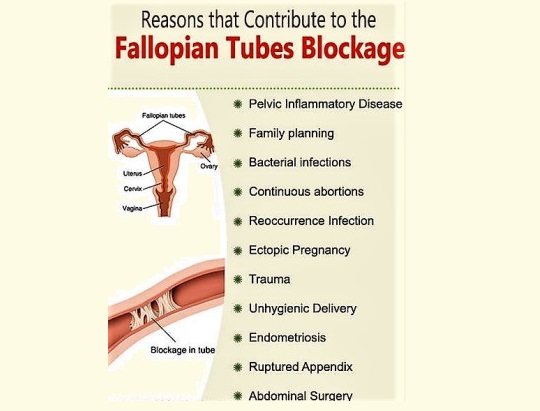
Ectopic pregnancy
If an ectopic pregnancy happened previously (an embryo implanting into the fallopian tube instead of uterus), and if it was severe enough the tube would have been removed along with the embryo.
Pelvic surgery
Sometimes if pelvic surgery was performed due to an infection that ended up costing the patient a fallopian tube, this would have left her with only one.
Tumor
Or if a tumor happened to have been growing in a tube, then obviously everything in that area would have been removed.
Born with one tube
Once in a great while, some women are only born with one fallopian tube.
However, unless it is known that there is only one functioning fallopian tube due to surgery having to be performed because of a tumor, ectopic pregnancy, or pelvic infection- women may not know that they only have one fallopian tube. That is unless they have been trying to conceive for a year and they start asking their doctors questions as to why conception hasn’t happened.

When a woman is having a fertility check up, before going on any fertility drugs, the specialist will run several tests such as blood work, ultrasounds and another test called a hysterosalpingogram (HSG).
Fertility specialists have to run the HSG because that is the test that will indicate whether the fallopian tubes are functional. This procedure is done in a hospital but is an outpatient procedure. The way the HSG is done is that dye is injected into the uterus through the vagina and cervix, and is observed via X-ray. This is the way that will show whether the tubes are open are not, or if there is only one tube or not.
If only one tube is seen, or if it is shown that the other is blocked, then this way, you will have the knowledge about having only one functional tube as being an issue.

Again as mentioned previously, even though having one tube can mildly hinder the chances of a pregnancy from happening by reducing the chances of it by 50%- there are methods to increase the odds of conceiving with only one functional tube. These are the things you need to do to help increase your chances of getting pregnant.
Clean lifestyle
If you are looking to get pregnant, whether you have one or both functioning fallopian tubes you have to make sure your lifestyle is clean. If you are smoking, drinking or doing drugs, then you must stop altogether. That alone will hinder ovulation from happening. And even if pregnancy does occur, all of that will cause harm to the developing fetus.
Cut out caffeine
If you are drinking coffee, limit the caffeine intake by only drinking one cup of coffee a day.

Mind your weight
If you are overweight, or underweight, then you must create a goal to end up at an acceptable weight (slightly over or under is fine) in order to help make conception happen faster. To be honest, slightly overweight is a bit better than under – so that should be good news for many! If you are unsure of what to eat, then it is best to consult a dietician or nutritionist to give you guidance.
Exercise
Adding moderate exercise to your life will also help such as taking a half hour walk, five times a week. If you are working out too often, then you will want to cut that down as well since too much exercise can get in the way of conception as much as living a sedentary lifestyle would.
Lower stress levels
Finally, even though life is stressful, you will want to minimize the stress by taking up meditation, yoga or Tai Chi. The less stress there is in your body, the better chances you will have at achieving a pregnancy whether you only have one fallopian tube or two.

Not only do you want to incorporate a healthy diet to help you achieve an optimal weight to conceive, however, there are some foods that you will want to consume that will assist you with ovulating.
This is extremely useful considering you only have one functioning fallopian tube.
You will want to incorporate monounsaturated fats such as avocado and olive oil into your diet, and kick the trans-fats away (think about fast food). You will want to also increase vegetables in your diet because they contain nutrients that will assist with ovulation. Also, protein is important.

Foods such as green vegetables, legumes, eggs, fish, nuts and seeds support follicle development because they are rich in Vitamin E as well are a must have! If you are not crazy about these foods, or you have allergies, you can also take Vitamin E supplements that are safe.
You will also need iron to help keep your red blood count high which will help with ovulation as well, and foods such as red meat, poultry, whole grains, fortified cereal and legumes are rich in iron. Additionally, Vitamin C is important because it helps your body absorb iron. You can get Vitamin C from broccoli, peppers, onions, citrus fruits, and tomatoes.
Calcium is also crucial, and dairy products also help increase the chances of ovulation from happening so if you like milk, drink milk or eat cheese or have yogurt (with little sugar).
You will want to also take a Folic Acid supplement before you start trying to conceive because not only does it help with ovulation, but it helps prevent neural tube defects in the developing fetus.
Therefore diet is very important when it comes to you increasing the chances of you conceiving.

If you have been eating foods that will help stimulate follicular growth, hence ovulation, and you have been trying to stay calm, while kicking bad habits that hinder your chances of ovulation- then there is no reason that ovulation should not happen.
There are several ways to monitor when ovulation happens.
Basal body temperature
One way is by taking your body basal temperature each morning before you wake up. A body basal thermometer is different from the kind of thermometer you use for seeing if you have a fever. These thermometers are available at drugstores like Walgreen’s.
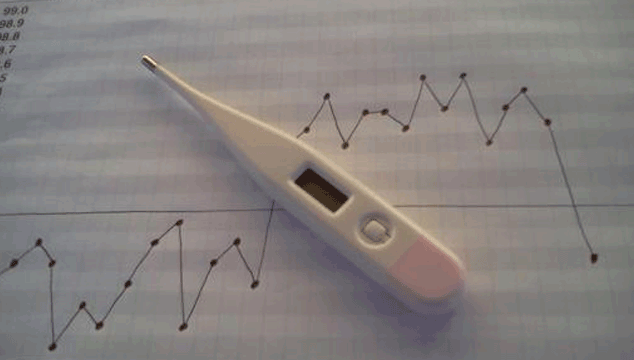
If you take your temperature before you move each morning, you will notice a slight rise about 14 days after your period, and that is when you are ovulating. Be sure to chart that. However because the egg dies off 24 hours after ovulation, you may want to use this method to chart before you actively start trying to get to know your cycle.
Ovulation predictor kits
You can also try using ovulation predictor kits which, unlike body basal thermometers can predict when you are close to ovulation. These kits measure the amount of luteinizing hormone in your urine. If the luteinizing hormone is detected, then it indicates that ovulation is on its way since a rise means an egg is about to be released.
Cervical mucus
There are other ways to monitor when ovulation happens such as checking your cervical mucous texture, which means if you are nearly two weeks after your period and it is thick and egg-white like, then that indicates that ovulation is almost there. If you are feeling abdominal discomfort as well at that time, then your ovaries are at work.
These are ways that you can tell whether you are nearing ovulation, or if it has already happened. Then you will definitely want to start getting busy if the time is right!

You may believe that if you have been told that pregnancy is likely to happen if a certain sexual position is done instead of others that it is nothing but a myth. However, it is true that some positions are more effective than others.
For instance, the missionary and doggy-style positions are the best ones for couples who are trying to have a baby.
If the woman is on top otherwise, then there is a good chance that the sperm will flow out due to gravitational pull. Therefore, any position that involves the woman being on the bottom is more effective in regards to achieving a pregnancy.


However, if pregnancy has not been achieved in 6 months or more even with having one fallopian tube while trying all of these tips and tricks, perhaps a further investigation must be done.
In fact, some fertility doctors may want to help move the process along if only one fallopian tube is functioning and/or present instead of you only relying on the tips to achieve a pregnancy mentioned above.
Some clinics may want the woman with only one functioning fallopian tube to go on clomiphene citrate, which is also known as Serophene or Clomid (mostly known as Clomid). This is the standard of treatment as it is the mildest fertility drug when beginning any kind of fertility treatments.
Clomid’s job is to help women ovulate on a regular basis. This way, the drug can be taken in conjunction with cycle monitoring done at the fertility clinic via ultrasound and bloodwork. This way, the patient will know when ovulation is impending without having to use any guesswork. Therefore, that is, when it will be time for intercourse.
In fact, in order to increase the chances of a pregnancy to happen when there is only one fallopian tube functioning or present- the best thing for a woman to do is if she does end up going on Clomid and is being monitored by the specialist, she must also incorporate the methods listed earlier in the article into her regimen. This way, the odds of conception happening will increase that much!
Therefore, if she is doing everything possible to increase her chances of getting pregnant, it will happen even if there is only one fallopian tube functioning.
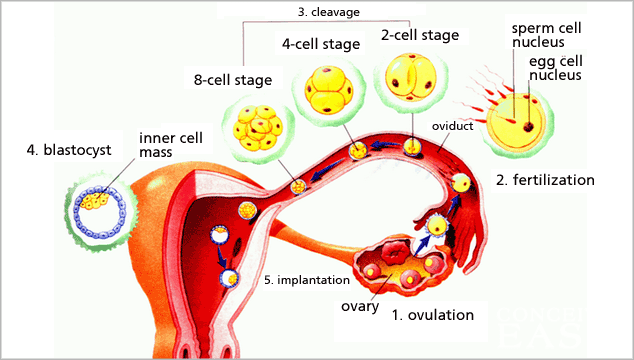

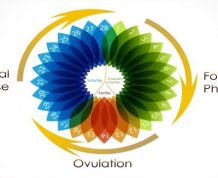

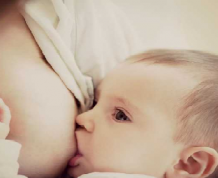





Comments